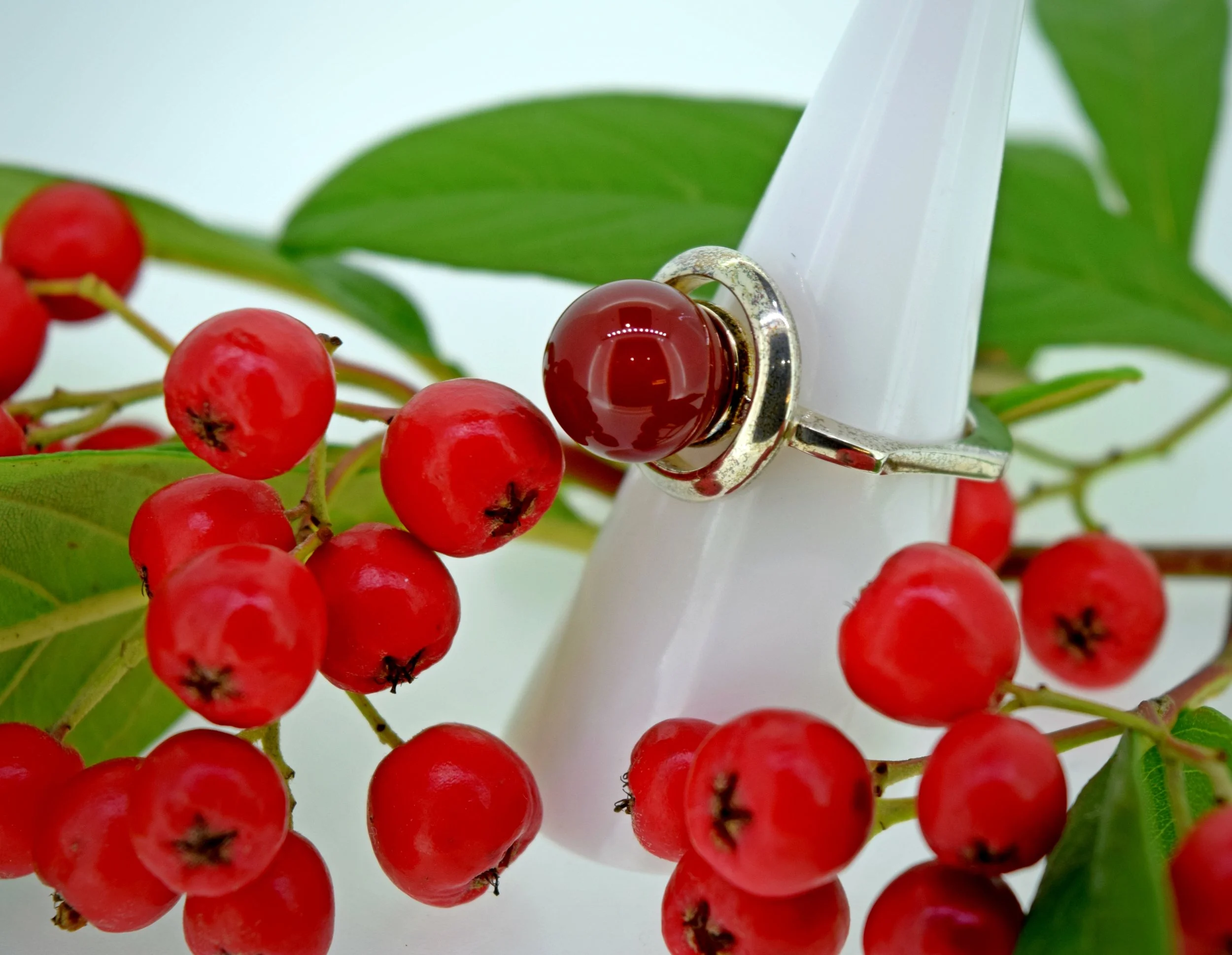Chalcedony and Agate
Beautiful in its simplicity, the luminous pure colours of chalcedony makes it a versatile stone to work with while agate, on the other hand, provides an infinite number of patterns and textures that fascinate with their uniqueness.
Chalcedony is a group of compact microcrystaline quartzes in which the gem appears as a solid mass but is in fact composed of very fine and densely packed quartz fibres in layers or spherical aggregates.
Agate occurs in nodular masses in volcanic rocks and when split open reveals an amazing variety of colours and patterns which distinguishes it from other kinds of chalcedony. The various band colours are often determined by the differing impurities present.
Both chalcedony and agate are highly regarded stones, worn in many cultures as protection against the ‘evil eye’.
Blue Chalcedony
Blue chalcedony is simple but beautiful, offering floral tones ranging from delicate lilac to periwinkle blue to smoky lavender. The best material is translucent, with lower-grade chalcedony often having some clouds. The stones popularity over the last few years has pushed up its prices and top-quality intense blue chalcedony can be moderately expensive.
Carnelian
Deriving its name from the Latin word carneus (meaning fleshy), carnelian (or cornelian as its also called) has been a popular stone for many years, its warm tones once thought to still the blood and calm the tempter. The colours range from a pure, intense red-orange to softer brownish oranges and reds depending on the quantity of iron oxide present.
Higher quality stones are often semi-transparent with an intense colour that almost seems to glow, and natural carnelian should have a cloudy distribution of colour without any faint banding or colour zoning.
The colour of carnelian can be enhanced by heating, the best stones coming from India where they are placed in the sun to change brown tints to red. Unfortunately, a lot of carnelian on the market are actually agates that have been dyed. Except for the best red-orange material, carnelian is often relatively inexpensive.
Chrysoprase
Used by both the Greeks and Romans as a decorative stone, chrysoprase is the most valued variety of chalcedony. The best chrysoprase has an intense apple-green colour and is translucent with no clouds. However, the colour may also be pale green, emerald green or even dark green, the depth of the colour depending on the amount of hydrated silicates or nickel oxides present.
The stone’s translucency will often vary and at times can appear almost opaque. Its colour tends to be uniform and evenly spread with occasional inclusions in the form of black or brown speckled deposits, which can give it a jade-like appearance.
The popularity of the intensely coloured chrysoprase has made it more expensive, but the lower-grade colours are moderately priced.
Onyx
In its natural state, contrary to popular belief, onyx is not black but has straight bands of white and earthly brown colours. Black onyx is not onyx but actually dyed black agate or chalcedony; it simply does not exist naturally. The way they go about it is to soak agate in a sugar solution and then heat it in sulphuric acid to carbonise the sugar particles, which turns the agate black. Regardless, dyed black onyx has been used in jewellery for countless years and is heavily associated with the Art Deco period where they created geometric designs using slabs of black onyx set with marcasites.
Fossilised Wood
Petrified wood occurs when sections of a buried tree transforms into a mineral after centuries of immersion under extreme pressure. The wood itself does not actually turn into stone; instead the shape and structural elements of the wood are preserved as the organic substances decompose and are replaced by mineral substances. The colours of fossilised wood tend to be red and reddish brown, but a few green pieces do appear as well. It is not an expensive material.
Fossilised Coral
Fossilised coral is formed the same way as fossilised wood; through centuries of extreme pressure. The stones are covered in beautiful patterns created by cross-sections of coral branches, providing each stone with its own unique set of details. Colours range widely from delicate pinks, yellow ochres and creams to vibrant reds and browns. Considering fossilised coral is still a collectors stone, good examples can often be expensive.
Sources:
Judith Crowe, The Jeweller's Directory of Gemstones (London: A&C Black, 2006)
Cally Hall, Gemstones (London: Dorling Kindersley, 1994)
Jaroslaw Bauer and Vladimir Bouska, A Guide in Colour to Precious & Semiprecious Stones (London: Octopus Books, 1983)



